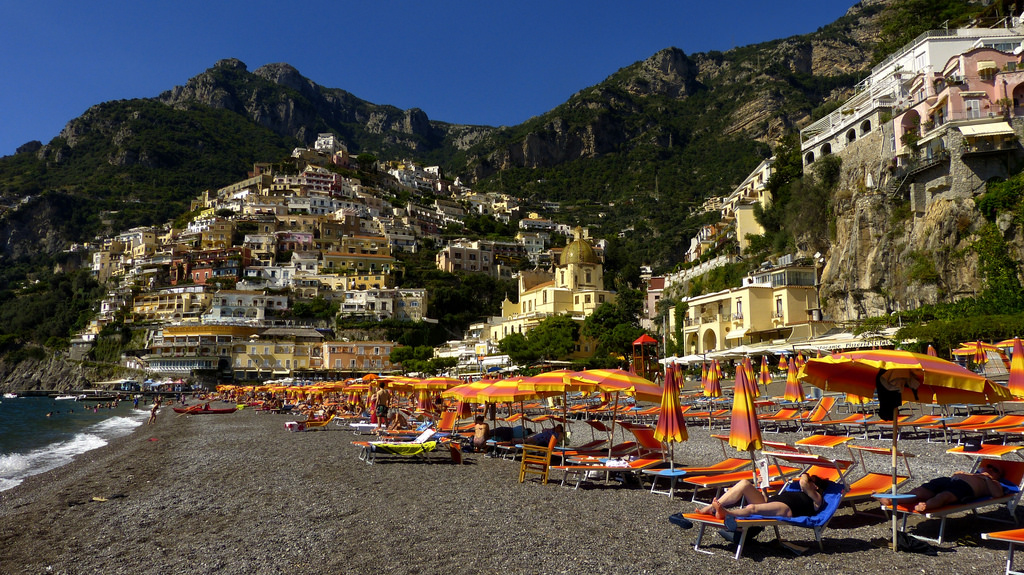
Italy by Miradortigre
If you are repeatedly advised by your traveler buddies to visit Italy, then they rightly deserved to say this. The country is awesomely enriched with culture, history and traditional heritage. The phenomenal past of the country is reflected through the architectural art and designs of its well preserved and maintained monuments. Italy was a center of past renowned civilizations. The patriotic Italians have protected their dazzling ancestry and established countless museums, galleries and institutions to showcase their remarkable antecedent.
Having mild temperature in its regions, mostly, the tourists pay visit to Italy in summer and autumn when the country’s landscape becomes astonishingly stunning and add immense beauty to its sites. However, some visitors prefer winter for sightseeing when the stations aren’t overcrowded. It has several appealing features for adventurers as well as the geography is adorned with splendid rocky mountains including the wondrous Alps, tranquil lakes and rivers and numerous breathtaking scenic locations. Travelers can use a bus, train, plane, ferry or cruise ship to wander around in Italy. The Italian railway system is excellent and cheap which is owned by the state. In the nutshell if you are desirous to see Italy, we assure your trip as memorable and gratifying. Visit Italy and get lost in its spell-binding aesthetic beauties surrounded with panoramic sceneries.
It is admitted fact that whole Italy is truly spectacular, however it is particularly known for having the most World Heritage sections. And the country’s enormous cultural heritage makes it the 5th most-visited country in the lovely planet.
See also: 7 Famous Natural Wonders of Italy
In this article, we’ve made a list of 30 top tourist attractions and the best visiting places of Italy for your interest and all of these are narrated below in alphabetical order.
1- Galleria Borghese

The Galleria Borghese (Borghese Gallery) is an art gallery in Rome, Italy, housed in the former Villa Borghese Pinciana. The Villa was built by the architect Flaminio Ponzio, developing sketches by Scipione Borghese himself, who used it as a villa suburbana, a party villa at the edge of Rome. The Galleria Borghese includes twenty rooms across two floors. The museum is divided into two parts: the ground-floor gallery, with its superb sculptures, intricate Roman floor mosaics and over-the-top frescoes, and the upstairs picture gallery.
To limit numbers, visitors are admitted at two-hourly intervals, so you’ll need to pre-book your ticket and get an entry time.
2- Colosseum
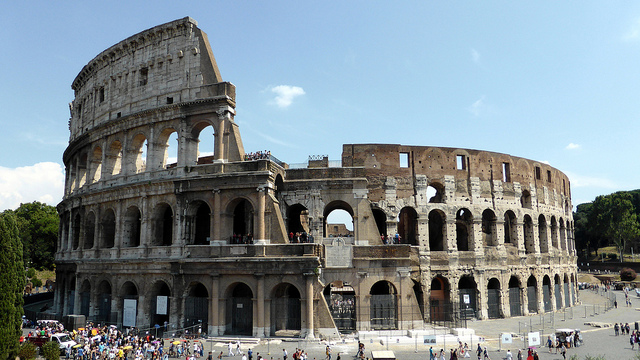
Colosseum is perhaps the best tantalizing and spell-binding ancient structures in Italy. Imagine it all white, completely covered in splendid travertine stone slabs. It is elliptic in shape in order to hold more spectators. It had four floors; the first three had eighty arches each; the arches on the second and third floors were decorated with huge statues. The Colosseum is situated just east of the Roman Forum. Construction began under the emperor Vespasian in 72 AD and was completed in 80 AD under his successor and heir Titus. It is one of Rome’s most popular tourist attractions and has close connections with the Roman Catholic Church.
3- David
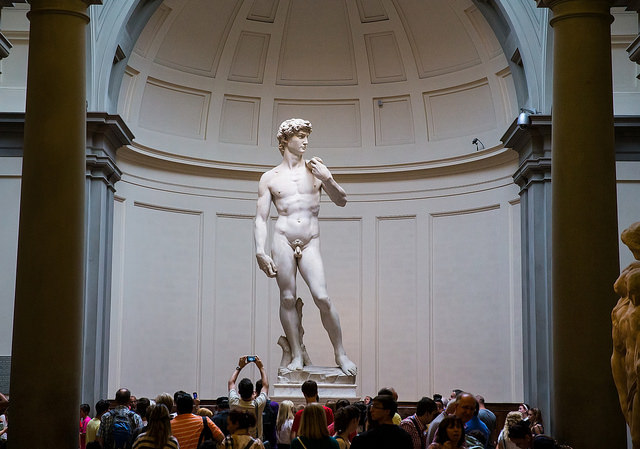
David is a masterpiece of Renaissance sculpture created between 1501 and 1504, by Michelangelo. The statue of David was started by a different artist, Agostino di Duccio, in 1463. It is a 4.34-metre (14.2 ft), 5.17-metre (17.0 ft) with the base marble statue of a standing male nude. In 1873 the statue was moved to Accademia art gallery in Florence to protect it from damage, a replica now stands in it’s original location at the Piazza della Signoria. You’ll find him among other statues by Michelangelo, some of which are only half finished. Ever since Renaissance times, Florence has seen David as an emblem of the city. The statue is also a reminder of the example to follow: defend boldly and lead justly.
4- Lake Como
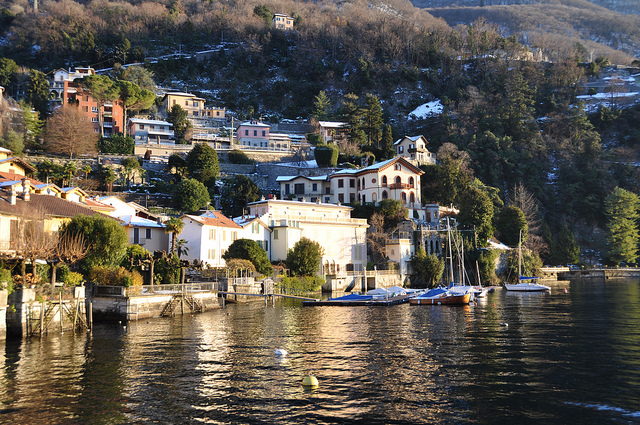
Lake Como (Lago di Como) is one of the famous Italian Lakes destinations, which is located near Milan in the north of Italy. Lake Como is a long (50km), slender and extremely deep water body. Trains run from Milan to Como frequently, taking around 40 minutes and there is a direct bus service from Bergamo Airport to Como. Steamers, boats and buses serve all the main towns on Lake Como. Steamers, boats and buses serve all the main towns on Lake Como. A frequent boat service connects the central resorts, Lenno, Tremezzo, Villa Carlotta, Cadenabbia, Menaggio, Bellagio and Varenna, including a car ferry.
5- Florence Cathedral

The typical Italian Gothic building, the Cathedral of Florence, is dedicated to “Santa Maria del Fiore“. The church was designed by Arnolfo di Cambio (c1245-1302) who considerably enlarged the existing religious structure. Finished around 1367, the Cathedral was completely covered by coloured marbles like the earlier Baptistery, except for the façade that remained unfinished and was terminated only in the 19th century. The cathedral complex, located in Piazza del Duomo, includes the Baptistery and Giotto’s Campanile. The three buildings are part of the UNESCO World Heritage Site covering the historic centre of Florence and are a major attraction to tourists visiting the region of Tuscany.
6- Lake Garda
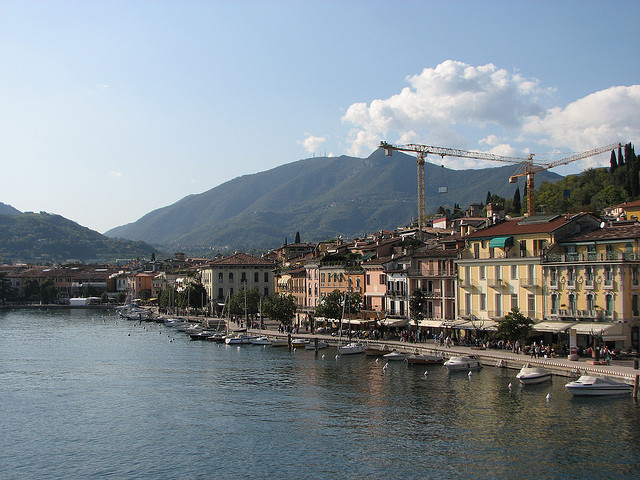
The beautiful lakeside towns around Lake Garda (Lago di Garda) have charmed foreign visitors for centuries. Even for the ancient Romans, the area was a luxury summer destination. It is located in the north-east of Italy. The lake and its shoreline are divided between the provinces of Verona (to the south-east), Brescia (south-west), and Trentino (north).The towns around the lake, with the possible exception of workaday Peschiera, are all pretty, pleasant places to stay. Infrequent ferry services connect major towns on the eastern and western shores of Lake Garda. Buses are faster alternatives to ferry services.
7- Grand Canal
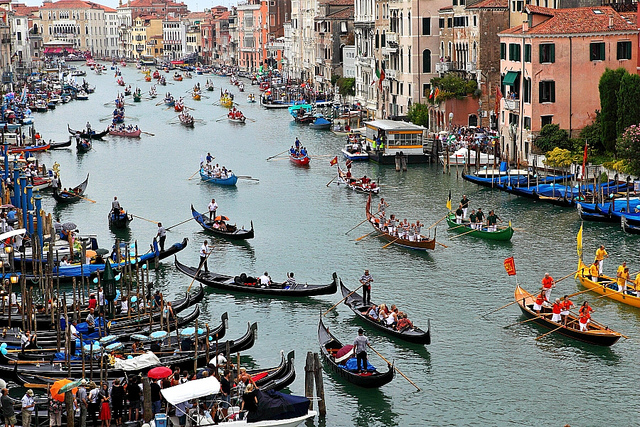
The Grand Canal (Canal Grande), is a canal in Venice, Italy. It forms one of the major water-traffic corridors in the city. Romantic gondolas, and Italian architecture along the Grand Canal helped earn this status. The banks of the Grand Canal are lined with more than 170 buildings, most of which date from the 13th to the 18th century, and demonstrate the welfare and art created by the Republic of Venice. Most of the palaces emerge from water without pavement. Consequently, one can only tour past the fronts of the buildings on the grand canal by boat. It is 3,800 m long, 30–90 m wide, with an average depth of five meters (16.5 ft).
8- Manarola
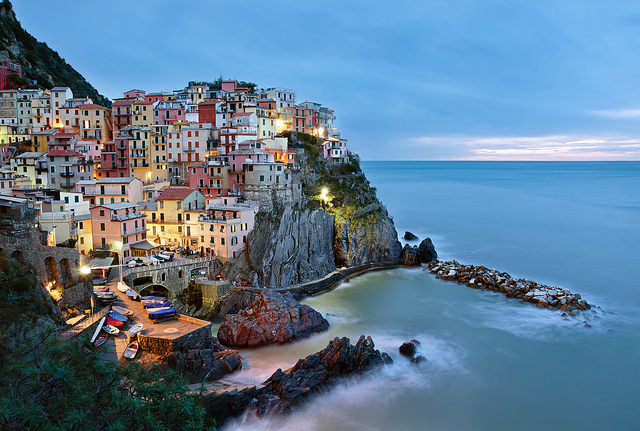
Manarola may be the oldest of the towns in the Cinque Terre, with the cornerstone of the church, San Lorenzo, dating from 1338. Attached to the train station by a 200-yard tunnel, the town spills down a ravine to the wild and rugged coastline at the Ligurian sea. The tiny harbor at Manarola features a boat ramp, picturesque buildings tripping down the ravine and the town’s swimming hole. Although there is no real beach here, it has some of the best deep-water swimming around. No visit to this charming hamlet is complete without doing the Manarola Vineyard Walk. It eventually leads you to the trail that takes you to the next town, Corniglia.
9- Milan Cathedral
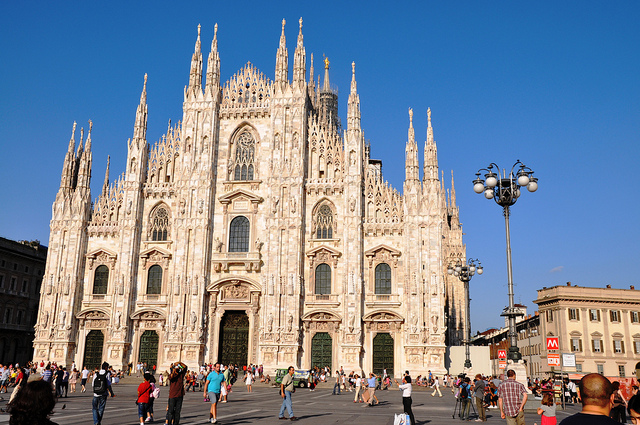
Milan Cathedral is a sacred place in which it people pray and confess, and where regular holy Masses are celebrated. It is open daily from 7.00 am – 7.00 pm and admission is free for individual visitors and worshipers. .The Gothic cathedral took nearly six centuries to complete. It is the 5th-largest church in the world and the second largest in Italy. The interior of the cathedral includes numerous monuments and artworks. Milan’s cathedral has recently developed a new lighting system, based on LED lights.
10- Piazza Navona
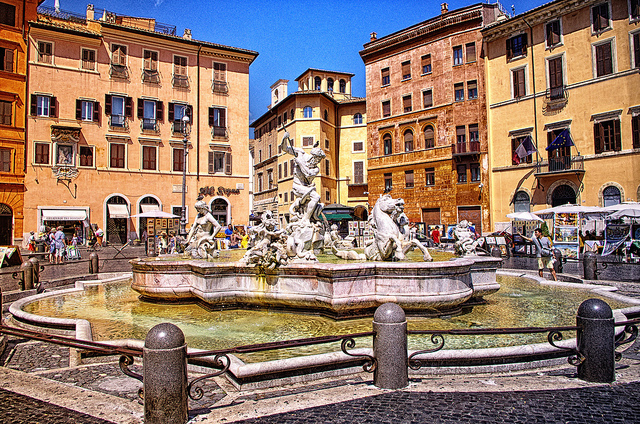
Originally built as a stadium in the first century for athletic contests and chariot races, Piazza Navona is lined with luxurious cafes and Baroque palaces and is the home to three lavish fountains. From 1650 to the late 19th century the square was sometimes flooded in summer and used for aquatic games and staged naval battles. The modern piazza is a lively place, a place where both locals and tourists like to hang out. Artists gather in the sqaure to paint and there are many entertainers and vendors selling souvenirs. It is located in Rome.
11- Ostia Antica
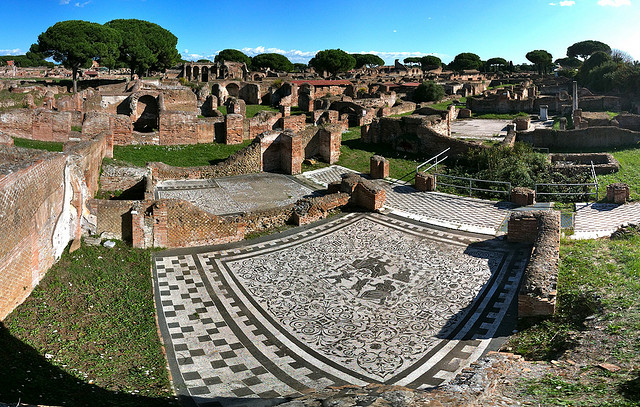
Ostia Antica is a large archeological site, close to the modern suburb of Ostia that was the location of the harbour city of ancient Rome, which is approximately 30 kilometres (19 miles) to the northeast. The site is noted for the excellent preservation of its ancient buildings, magnificent frescoes and impressive mosaics. The ruins of Ostia Antica are open seven days a week, from 9 in the summer and 9:30 in the winter. Ostia now sprawls over 10,000 acres around a main street that runs for more than a mile. It’s very easy to visit Ostia Antica independently from Rome. A suburban commuter train service runs several times an hour to the coast and stops at Ostia Antica station.
12- Piazza del Campo
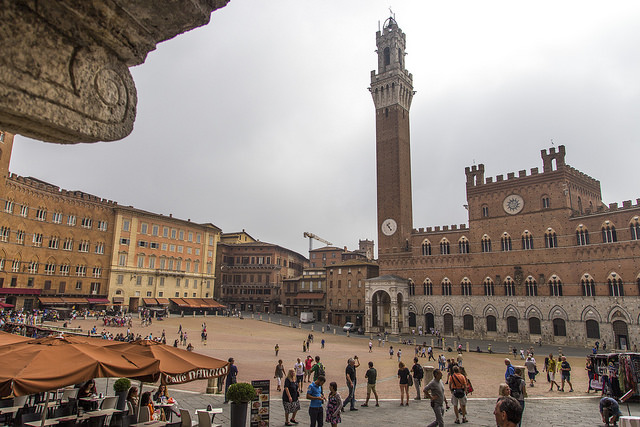
The fan-shape Piazza del Campo, known simply as il Campo (The Field), is one of the finest squares in Italy. Constructed towards the end of the 12th century on a market area it is located in the middle of the town. It is renowned worldwide for its beauty and architectural integrity. Il Campo has always been the theatre of the most important citizens’ events and the privileged meeting place of the Sienese. The twice-a-year horse-race, Palio di Siena, is held around the edges of the piazza. The paving is made of red bricks arranged in fishbone style, divided into a sunburst pattern by nine strips of travertine (in memory of the Government of the Nine, who ruled over the city from 1292 to 1355).
13- Leaning Tower of Pisa
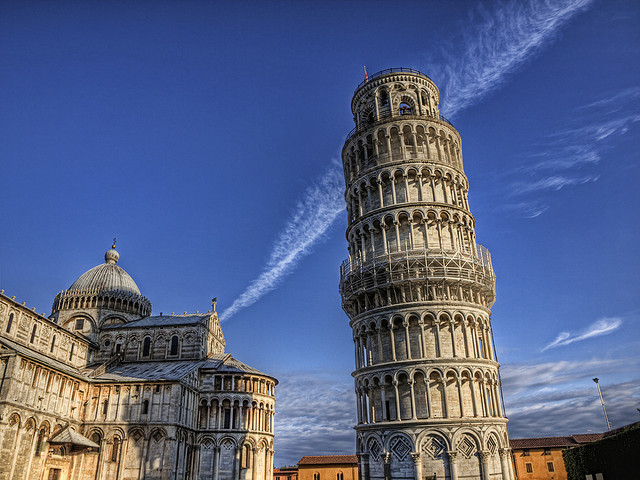
The Leaning Tower of Pisa (Torre pendente di Pisa) is a bell tower in Pisa, Italy. It is world famous for its prominent tilt to one side. The foundations were built on soft subsoil which had difficulty supporting the tower’s weight (14,500 ton). Construction of the Tower of Pisa started in the year 1173 and was completed in 1372. As well as the tower, Pisa’s Cathedral Square (Piazza del Duomo or Piazza dei Miracoli) also has a cathedral, a baptistery and a cemetery. The tower’s design has widely been attributed to Guglielmo and Bonanno Pisano. Because of the marshy underlying subsoil there are several other towers in Pisa with less prominent tilting issues.
14- Pompeii
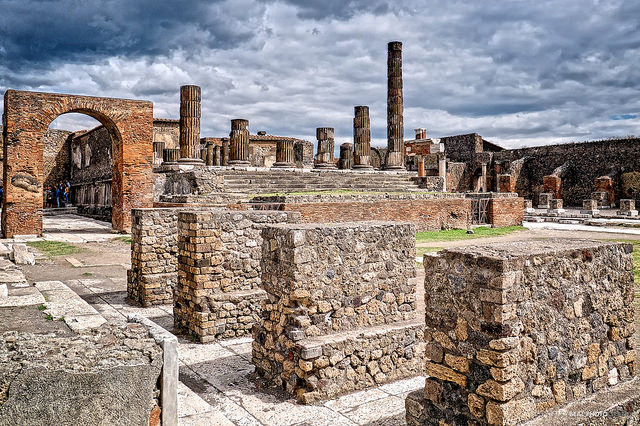
Pompeii is one of it’s the most renowned historic ruins. This famous site is actually a sepulcher town which was a center of the Roman civilization, culture, art and customs. This ancient city was destroyed by a massive volcanic eruption almost 1700 years ago. The historic ruins of Italy are attracting millions of visitors annually to visit this phenomenal site and it is one of the most popular tourist sites of Italy. It is today a UNESCO World Heritage Site and the archaeologists from all over the world have made tremendous research on the remains of Pompeii including the Greek-inspired buildings, cobble-stoned streets, brothels, frescoes and numerous artifacts.
For details: Pompeii: The Historic Ruins of Italy
15- Positano
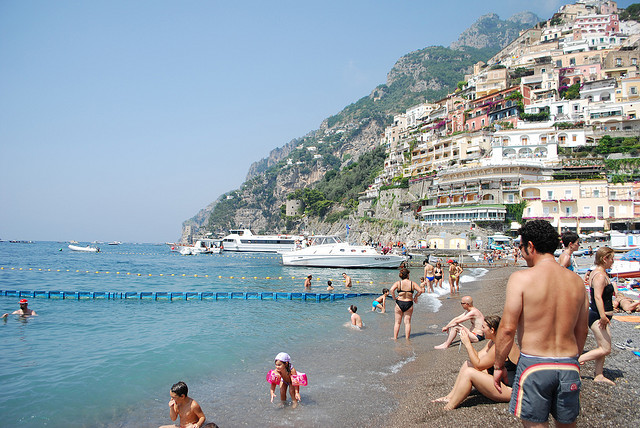
Positano is a pretty seaside town is perched precariously on a striated cliff-gorge on the Amalfi Coast. It is a glamorous holiday destination for those who want to see and be seen, and a peaceful retreat, too. Positano approaches food with typical Italian gusto. Countless restaurants line those twisty streets. Positano can be reached by the SS163 Amalfitana national road, or by the SP425 provincial road. The spot is famous for its enclave and forthe hills leading down to the coast.
16- The Roman Forum
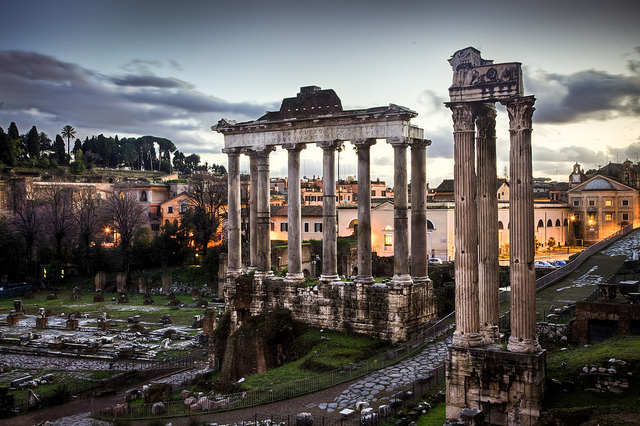
The Roman Forum (Foro Romano) is a rectangular forum (plaza) surrounded by the ruins of several important ancient government buildings at the center of the city of Rome. It was for centuries the center of Roman public life: the site of triumphal processions and elections; the venue for public speeches, criminal trials and gladiatorial matches; and the nucleus of commercial affairs. Many of the oldest and most important structures of the ancient city were located on or near the Forum. The Roman Forum has been a source of inspiration for visual artists for centuries.
17- San Gimignano
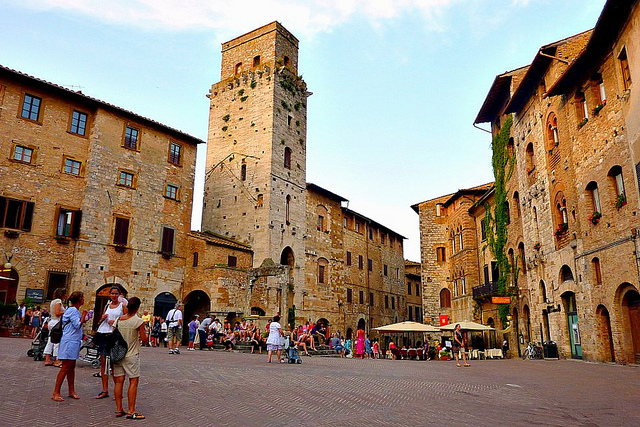
San Gimignano is situated in the Val d’Elsa, 56 km south of Florence. Its walls and fortified houses form an unforgettable skyline, in the heart of the Etruscan landscape. The site bears exceptional testimony to the civilization of the Middle Ages in that it groups together within a small area all the structures typical of urban life: squares and streets, houses and palaces, wells and fountains. It served as an important relay point for pilgrims travelling to or from Rome on the Via Francigena. San Gimignano has retained its feudal atmosphere and appearance. The town also has several masterpieces of 14th- and 15th-century Italian art.
18- Paestum
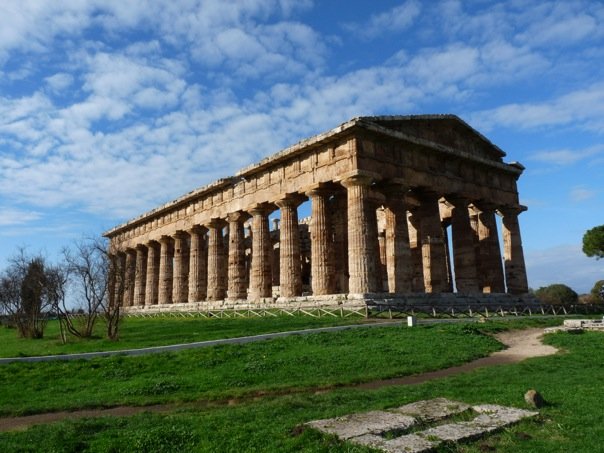
Paestum was a major ancient Greek city on the coast of the Tyrrhenian Sea in Magna Graecia. The ruins of Paestum are notable for their three ancient Greek temples which are in a very good state of preservation. The Temple of Hera is the oldest of the three temples, built about 550 BC. The Temple of Neptune (or Apollo or Hera II) next door dates from 450 BC and is the most complete of the three. he Temple of Ceres (or Athena) was built in c.500 BC in a transitional style between Ionic and early Doric. The middle of the site consists of the Roman forum, with extensive foundations of various public and private buildings.
19- Palazzo Pitti
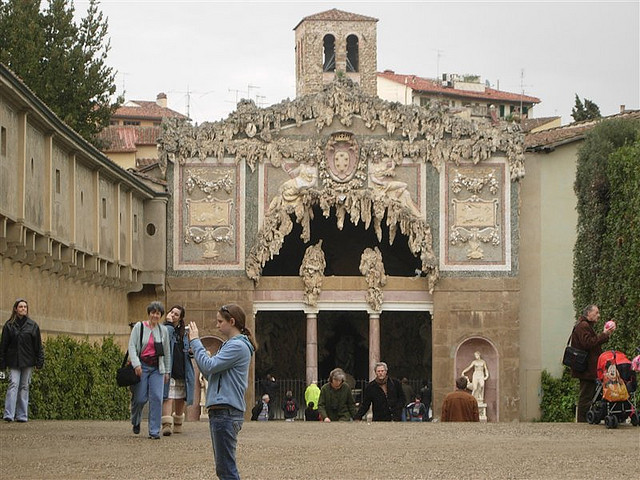
The Palazzo Pitti is a large palace situated in Oltrarno, across the river from the historic center of Florence. The palace was bought by the Medici family in 1549 and became the chief residence of the ruling families of the Grand Duchy of Tuscany. It grew as a great treasure house as later generations amassed paintings, plates, jewelry and luxurious possessions. The palazzo is now the largest museum complex in Florence. In spite of its metamorphosis from royal residence to a state-owned public building, the palazzo, sitting on its elevated site overlooking Florence, still retains the air and atmosphere of a private collection in a grand house.
20- Pantheon
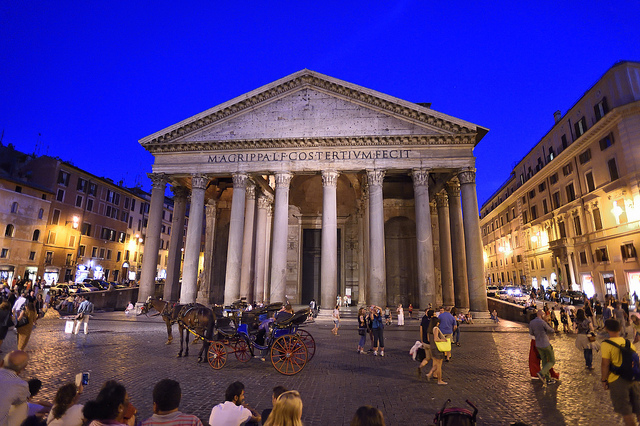
The well-preserved Pantheon of Rome is well-known for its thick brick walls and large marble columns. Its design makes an immediate impression on viewers. The most sensational feature of the building is the more than forty-three meter high dome. It was the largest dome in the world until 1436 when the Florence Cathedral was constructed. It has been in continuous use throughout its history, and since the 7th century, the Pantheon has been used as a church dedicated to “St. Mary and the Martyrs“.
21- Ponte Vecchio
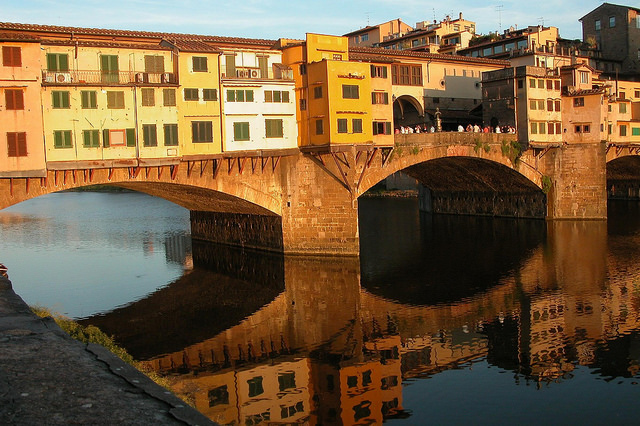
The Ponte Vecchio or the “Old Bridge” over the Arno River, in Florence, Italy, is a medieval stone bridge noted for still having shops built along it. The Ponte Vecchio has been home to shops across its span since the 13th century. Floods in 1177 and 1333 destroyed the bridge, and in 1966 it came close to being destroyed again. The Ponte Vecchio’s two neighbouring bridges are the Ponte Santa Trinita and the Ponte alle Grazie. It is popularly connected to idea of love and lovers: by locking the padlock and throwing the key into the river, the lovers became eternally bonded.
22- Piazza San Marco
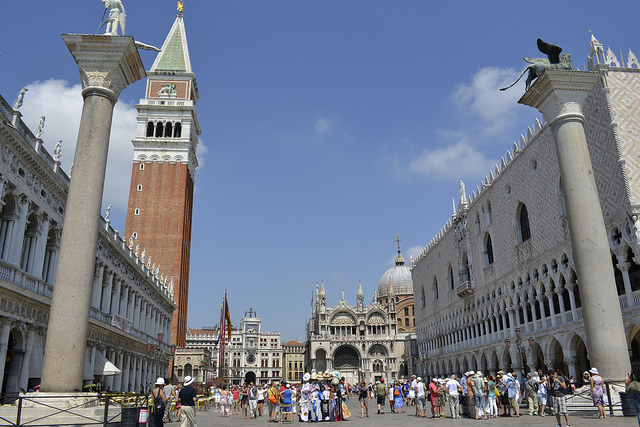
Piazza San Marco (St Mark’s Square), is the principal public square of Venice, Italy, where it is generally known just as “the Piazza” (la Piazza). This great square overlooking the water is a mixture of spaces, volumes and styles: the Procurator’s residence, the bell tower, the Doge’s Palace and the Sansoviniana Bookshop. The square is bordered by historic buildings and represents the focal point of Venice’s water transport system. Piazza San Marco was constructed in the ninth century as a small square dotted with trees.
23- Basilica of Saint Mark
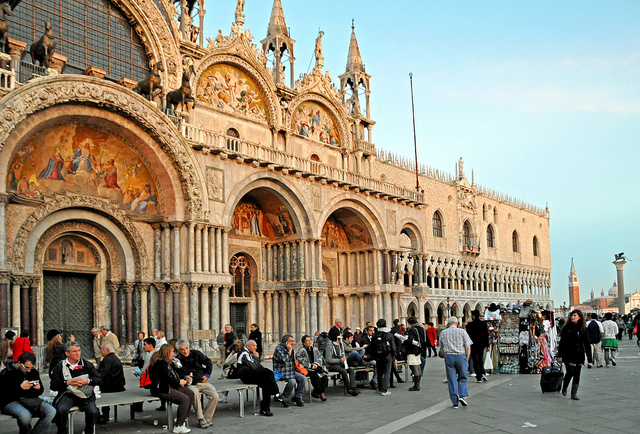
The Patriarchal Cathedral Basilica of Saint Mark (commonly known as Saint Mark’s Basilica) is the cathedral church of the Roman Catholic Archdiocese of Venice, northern Italy. For its opulent design, gold ground mosaics, and its status as a symbol of Venetian wealth and power, from the 11th century on the building has been known by the nickname Chiesa d’Oro (Church of gold). The church burned down in 976 during an uprising. It was rebuilt twice, the last time in 1063. Its design mixes eastern and western building styles in a unique way.
24- Sistine Chapel

The Sistine Chapel (Cappella Sistina) is a chapel in the Apostolic Palace, the official residence of the Pope, in Vatican City. The chapel is a high rectangular building, for which absolute measurements are hard to ascertain. The chapel has served as a place of both religious and functionary papal activity. The main entrance to the Chapel, located opposite the small entrance used today, is preceded by the imposing Sala Regia built for papal audiences. The Sistine Chapel is now climate controlled with air-conditioners and a sophisticated monitoring system verifies and checks the environmental conditions in the Chapel. Michelangelo’s famous Sistine ceiling depicts scenes from Genesis in dramatic and moving detail, while The Last Judgment on the end wall is striking and powerful.
25- Spanish Steps
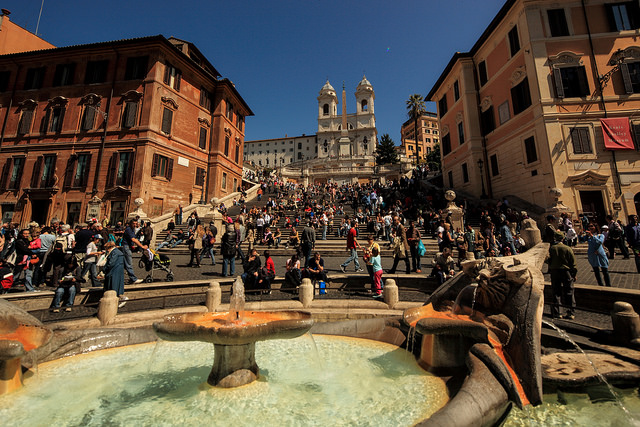
With its irregular butterfly design, the beautiful “Scalina Spagna”, or Spanish Steps are just one of these must see places when in Rome and a great example of Roman Baroque Style. Built in 1723-1725, the site’s unique design and elegance has made it a popular place for artists, painters and poets who were attracted to the place which inspired them in return. At the lower end of the stairs you can find an early baroque fountain called Fontana della Barcaccia, or “Fountain of the Old Boat”. The stairway was designed by architects Francesco de Sanctis and Alessandro Specchi.
26- Trevi Fountain
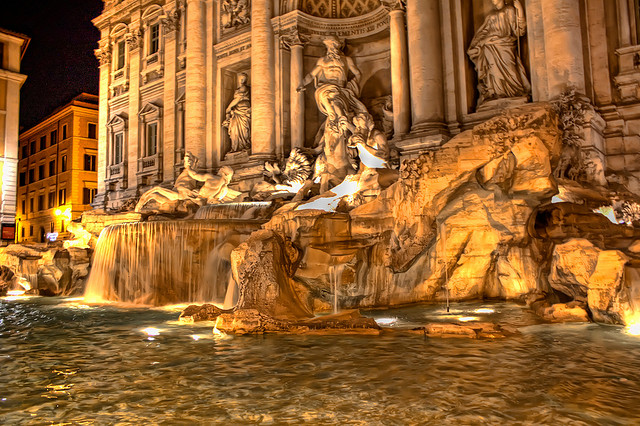
The Trevi Fountain is a fountain in the Trevi district in Rome, Italy, designed by Italian architect Nicola Salvi and completed by Pietro Bracci. Standing 26.3 metres (86 ft) high and 49.15 metres (161.3 ft) wide, it is the largest Baroque fountain in the city and one of the most famous fountains in the world. It is famous for crown-throwing. Coins are purportedly meant to be thrown using the right hand over the left shoulder. An estimated 3,000 Euros are thrown into the fountain each day. The money has been used to subsidize a supermarket for Rome’s needy. The fountain was refurbished in 1998.
27- Uffizi Gallery
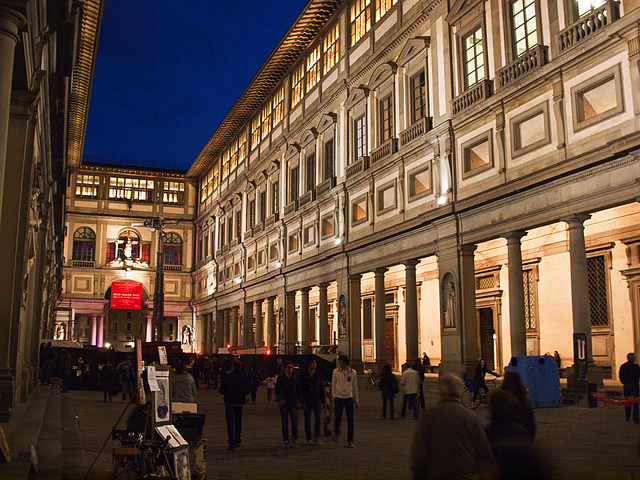
Uffizi Gallery attracts a number of tourists and in order to visit the Uffizi you have to wait long queues. This is because only small groups of visitors can enter, to not spoil the magnificent works kept in the museum. The Uffizi gallery was built in 1581 in Florence. Today it is considered as one of the oldest and most famous art museums in the world. The Gallery will touch you and take you into an emotional trip back into history organized in chronological order from the 13th to the 18th centuries. It attracts almost 1.5 million visitors each year.
28- Vatican City
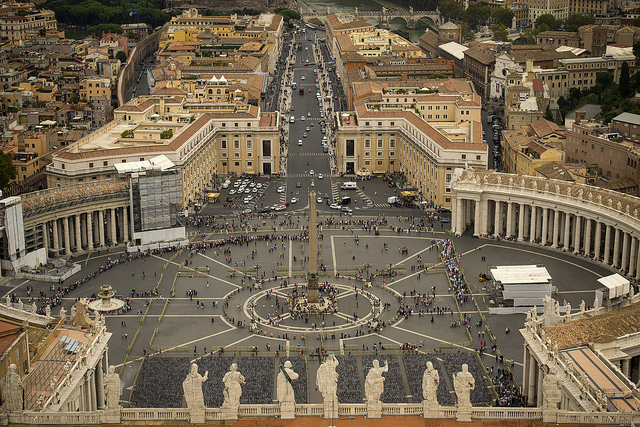
Vatican City officially the Vatican City State is a walled enclave within the city of Rome. With an area of approximately 44 hectares and a population of 842, it is the smallest internationally recognized independent state in the world by both area and population. Within Vatican City are cultural sites such as St. Peter’s Basilica, the Sistine Chapel and the Vatican Museums. They feature some of the world’s most famous paintings and sculptures. Within the territory of Vatican City are the Vatican Gardens date back to medieval times which account for more than half of this territory. The unique economy of Vatican City is supported financially by the sale of postage stamps and tourist mementos, fees for admission to museums, and the sale of publications.
29- Palazzo Vecchio

The Palazzo Vecchio ‘Old Palace” is the town hall of Florence, Italy. Palazzo Vecchio offers Roman ruins, a medieval fortress and amazing Renaissance chambers and paintings. The entire construction also rests on top of the ancient theater of the Roman colony of Florentia (dating back to the first century A.D.). Palazzo Vecchio’s current appearance is due largely to great works of renovation and interior decoration that were made around 1540. The building acquired its current name when the Medici duke’s residence was moved across the Arno to the Palazzo Pitti.
30- Vesuvius
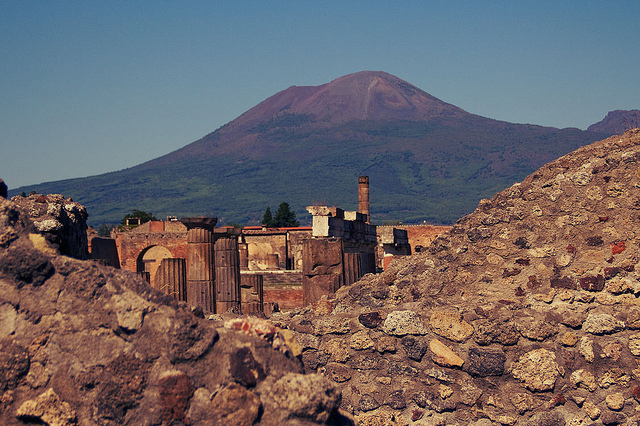
Vesuvius is the only active volcano in mainland Europe, and has produced some of the continent’s largest volcanic eruptions. Located on Italy’s west coast, it overlooks the Bay and City of Naples and sits in the crater of the ancient Somma volcano. Vesuvius is most famous for the 79 AD eruption which destroyed the Roman cities of Pompeii and Herculaneum. Vesuvius is currently quiet, with only minor seismic (earthquake) activity and outgassing from fumaroles in its summit crater, but more violent activity could resume in the future.
Please click the following to see more:
Amazing list. The lovely ancient ruins speak volumes about the glory of Rome and I’ve been to some of those places also, so I can say that you’ve compiled great places to visit when in Italy. Thanks.